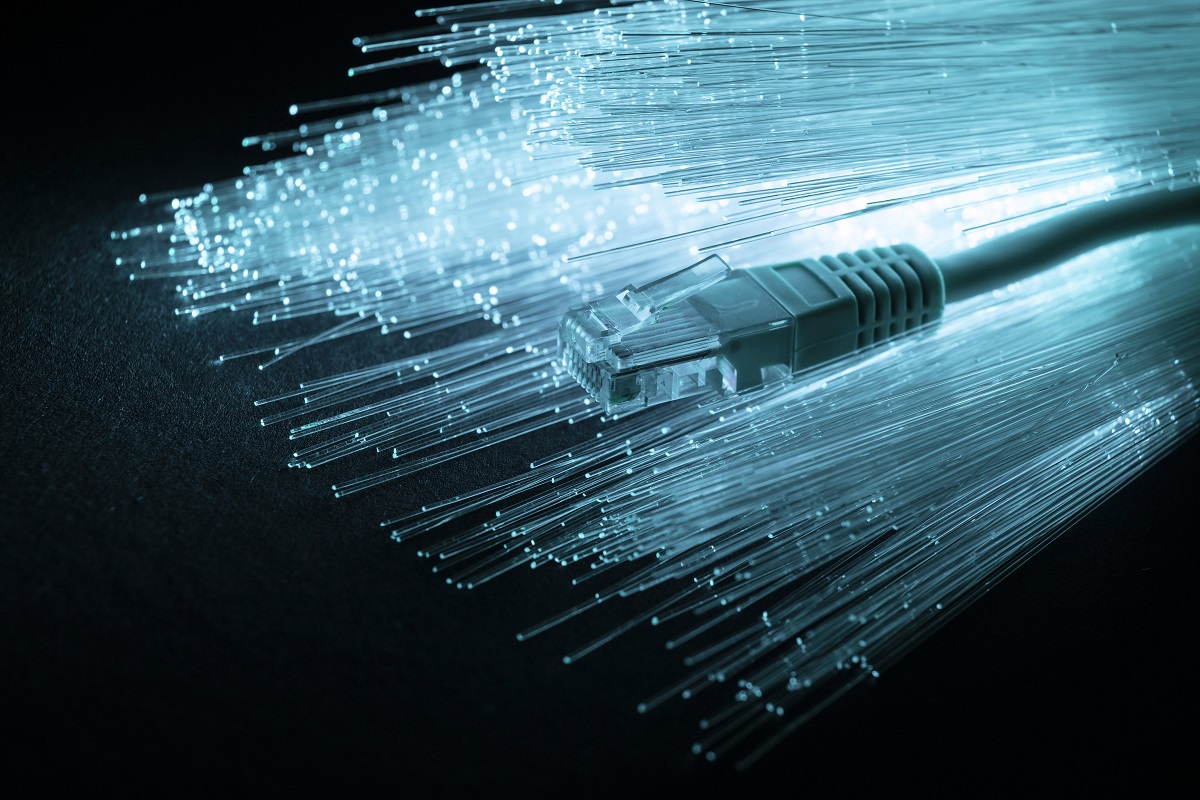
- Fiber internet delivers unmatched speed and reliability: Using light signals, it provides faster upload and download speeds with minimal latency, ideal for business operations.
- Supports high-demand business applications: Cloud storage, SaaS tools, video conferencing, and e-commerce platforms run smoothly with fiber, boosting productivity.
- Different fiber options exist for business needs: FTTH/FTTO, FTTC, and Dark Fiber offer flexibility depending on speed requirements, budget, and technical capacity.
- Fiber reduces downtime and operational costs: Faster connections minimize lost productivity, lower IT troubleshooting needs, and can reduce reliance on on-site servers.
- Future-proof and scalable technology: Fiber supports new technologies, additional users, and bandwidth-heavy applications, preventing costly upgrades as your business grows.
- Better long-term value than cable or DSL: Despite higher upfront costs, fiber often saves money by reducing interruptions, improving efficiency, and supporting growth.
In the digital age, reliable internet is not a luxury—it’s a necessity. From video conferencing to cloud storage and e-commerce operations, every business relies on high-speed internet to stay competitive. That’s why fiber internet has become increasingly popular among businesses of all sizes. But how does fiber internet work, and more importantly, how can it save your business money? Let’s break it down in an easy-to-understand way.
What Is Fiber Internet?
Fiber internet, often called fiber-optic internet, uses strands of glass or plastic fibers to transmit data as pulses of light. Unlike traditional copper-based connections like DSL or cable, fiber-optic cables can carry much more data at much higher speeds, and over longer distances, without losing signal quality.
- High-speed data transmission: Fiber internet offers download and upload speeds that can reach up to 1 Gbps or even higher in some cases.
- Low latency: Businesses that require real-time communication, such as video calls or online gaming platforms, benefit from minimal delays.
- Reliability: Fiber is less susceptible to interference from weather, electrical equipment, or distance limitations that affect other types of connections.
For businesses, these advantages mean more efficient operations, better customer experiences, and fewer technical headaches.
How Does Fiber Internet Work?
To understand how fiber internet works, it’s helpful to look at the basic technology behind it. Fiber-optic cables contain thin strands of glass or plastic that carry data in the form of light. These light signals are transmitted using lasers or LEDs, which bounce the light through the core of the fiber cable.
- Core and cladding: The core is the center of the fiber that carries the light signal, while the cladding surrounds it and reflects light back into the core, preventing data loss.
- Transmission: Light pulses encode digital data, which can include text, images, videos, and other types of files.
- Conversion: At the receiving end, optical signals are converted back into electrical signals that computers and other devices can use.
Unlike copper wires, which rely on electrical signals and can lose strength over distance, fiber-optic cables maintain signal integrity over long stretches. That’s why fiber is ideal for businesses that need consistent, high-speed internet.
Types of Fiber Connections for Businesses
Fiber internet is not one-size-fits-all. Businesses have a few options depending on speed needs, budget, and location:
- FTTH (Fiber to the Home) / FTTO (Fiber to the Office): The fiber line runs directly to the business premises, ensuring maximum speed and reliability.
- FTTC (Fiber to the Curb): Fiber reaches a neighborhood junction, and traditional copper lines carry data the rest of the way. This can reduce speed slightly but is often more cost-effective.
- Dark Fiber: Some businesses lease unused fiber lines to manage their own private networks. This option provides total control over bandwidth but requires technical expertise.
Why Fiber Internet Is Faster Than Cable or DSL
You may be wondering: isn’t cable internet fast enough? When businesses evaluate cable vs fiber internet, fiber consistently offers higher speeds, lower latency, and better reliability. Here’s why fiber stands out:
- Light vs. electricity: Fiber uses light, which travels faster and over longer distances without signal degradation.
- Higher bandwidth: Fiber can handle massive amounts of data simultaneously, supporting multiple devices without slowing down.
- Symmetrical speeds: Unlike cable, which often has slower upload speeds, fiber provides equal upload and download speeds—critical for cloud-based operations and sending large files.
- Less congestion: Fiber networks are less crowded than cable networks, reducing slowdowns during peak usage hours.
For businesses that rely on seamless connectivity, these factors translate into fewer interruptions and faster operations.
How Does Fiber Internet Work to Save Your Business Money?
Investing in fiber internet may seem expensive at first, but it can actually save your business money in several ways.
Reduce Downtime and Lost Productivity
When internet speeds are slow or connections drop frequently, employees can’t work efficiently. According to some estimates, downtime costs small and medium-sized businesses thousands of dollars per year.
- Faster upload/download speeds mean less waiting for files and documents.
- Video calls and cloud software run smoothly, reducing disruptions.
- Fewer technical support issues mean less money spent fixing network problems.
Lower Operational Costs
Fiber internet can reduce hidden operational costs that come with slower connections:
- Fewer servers needed: Businesses can rely on cloud-based services instead of investing in expensive on-site servers.
- Energy efficiency: Fiber consumes less power than older copper-based infrastructure.
- Reduced need for IT troubleshooting: A reliable connection decreases the frequency of network issues that require IT intervention.
Future-Proof Your Business
Fiber internet is scalable and capable of handling future growth:
- Higher bandwidth: As your business grows, fiber can support more devices and users without needing an upgrade.
- Support for new technologies: Advanced business tools like virtual reality meetings, AI applications, and IoT devices require high-speed internet that only fiber can consistently deliver.
- Long-term savings: Investing in fiber today avoids costly upgrades to your network tomorrow.
Cost Comparison: Fiber vs. Cable vs. DSL
While fiber may have higher upfront installation costs, it often provides better value over time:
| Connection Type | Typical Speed | Reliability | Monthly Cost | Business Impact |
| Fiber | 500 Mbps–1 Gbps+ | Excellent | $70–$150 | Minimal downtime, supports multiple users |
| Cable | 100–500 Mbps | Moderate | $50–$100 | Slower upload, possible congestion |
| DSL | 10–50 Mbps | Low | $40–$80 | Not suitable for large data or cloud usage |
Businesses that calculate the cost of lost productivity, downtime, and IT maintenance often find fiber to be the smarter long-term investment.
Can Small Businesses Benefit from Fiber?
Absolutely. Even if your business is small, fiber internet can make a huge difference:
- Cloud storage and SaaS applications run faster and more reliably.
- Remote work becomes seamless, allowing employees to collaborate without lag.
- Video conferencing and customer support calls maintain high quality.
- E-commerce operations, including payment processing and website performance, are optimized.
In short, fiber isn’t just for large enterprises. Small businesses that rely on technology daily will also see tangible benefits.
Common Questions Businesses Ask About Fiber Internet
How Long Does It Take to Install Fiber?
Installation times vary depending on your location and the complexity of the setup:
- Direct fiber installation to your office (FTTH/FTTO) usually takes a few days to a few weeks.
- Pre-existing fiber infrastructure can speed up installation.
- Planning permits, construction, and building approvals may add extra time for some locations.
Will Fiber Internet Work with My Current Network?
Fiber can integrate with existing networks:
- Routers and switches may need to be upgraded for higher speeds.
- IT teams can configure the network to optimize fiber usage.
- Transitioning is usually seamless, with minimal downtime during setup.
Are There Any Maintenance Requirements?
Fiber networks are generally low-maintenance:
- Cables are durable and resistant to weather or interference.
- Routine network monitoring is usually sufficient.
- Problems are easier to troubleshoot because the signal is digital rather than analog.
Is Fiber Internet Secure?
Yes, fiber offers strong security advantages:
- Harder to tap into than copper-based connections.
- Provides consistent data encryption options.
- Suitable for businesses handling sensitive client or financial information.
Tips for Choosing the Right Fiber Provider
Selecting the right provider ensures you maximize your ROI:
- Compare speeds and service tiers: Make sure the plan matches your business needs.
- Check for reliability and uptime guarantees: Look for providers offering SLAs (Service Level Agreements).
- Ask about installation costs and fees: Some providers offer promotions or bundle deals.
- Consider customer support: 24/7 support can save your business from extended downtime.
- Plan for scalability: Ensure the provider can upgrade your bandwidth as your business grows.
Conclusion: How Does Fiber Internet Work for Your Bottom Line?
Fiber internet works by transmitting data as pulses of light through ultra-thin glass or plastic cables. This technology delivers faster speeds, higher reliability, and symmetrical upload/download rates compared to traditional internet connections. For businesses, these advantages translate into fewer disruptions, lower operational costs, and long-term savings.
Investing in fiber internet is more than a technology upgrade—it’s a strategic move to future-proof your business. By reducing downtime, enhancing productivity, and supporting growth, fiber internet helps businesses operate more efficiently while saving money over time.
If your business is ready to move past slow connections and constant network issues, fiber internet is worth considering. The technology may be complex, but its benefits are straightforward: faster, more reliable connectivity that ultimately protects your bottom line.


